The Bickley ceramics project has been running for thirty years, and July 2010 saw the last ever fortnight session; making ware, gathering fuel and firing the kilns for the last time. | |||
Firing of the kiln starts slowly with fires in the entrance to the fireboxes. Larger timbers are used to help control the burn. This picture shows the flames already being drawn quite strongly into the kiln |  |
||
|---|---|---|---|
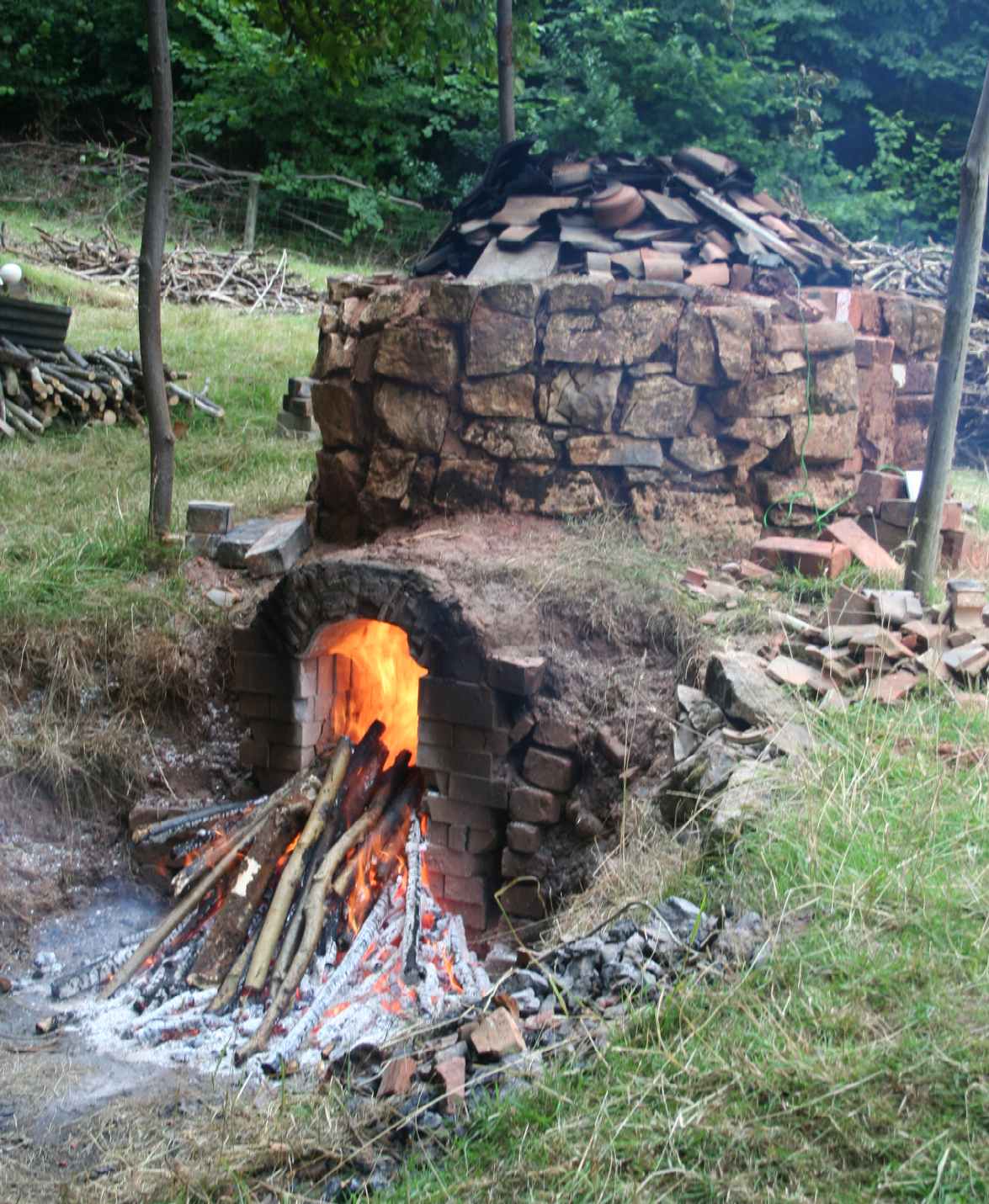 |
As the temperature rises smaller diameter wood is added to give a faster burn and care is taken to allow enough air to give a full burn |
||
As the charcoal and ash builds up the radiant heat from the fire boxes is intense so frequent changes of stoker were required. Despite the temperature of the air entering the kiln, the walls of the chamber remain surprisingly cool with insects continuing to walk around on the surface. | 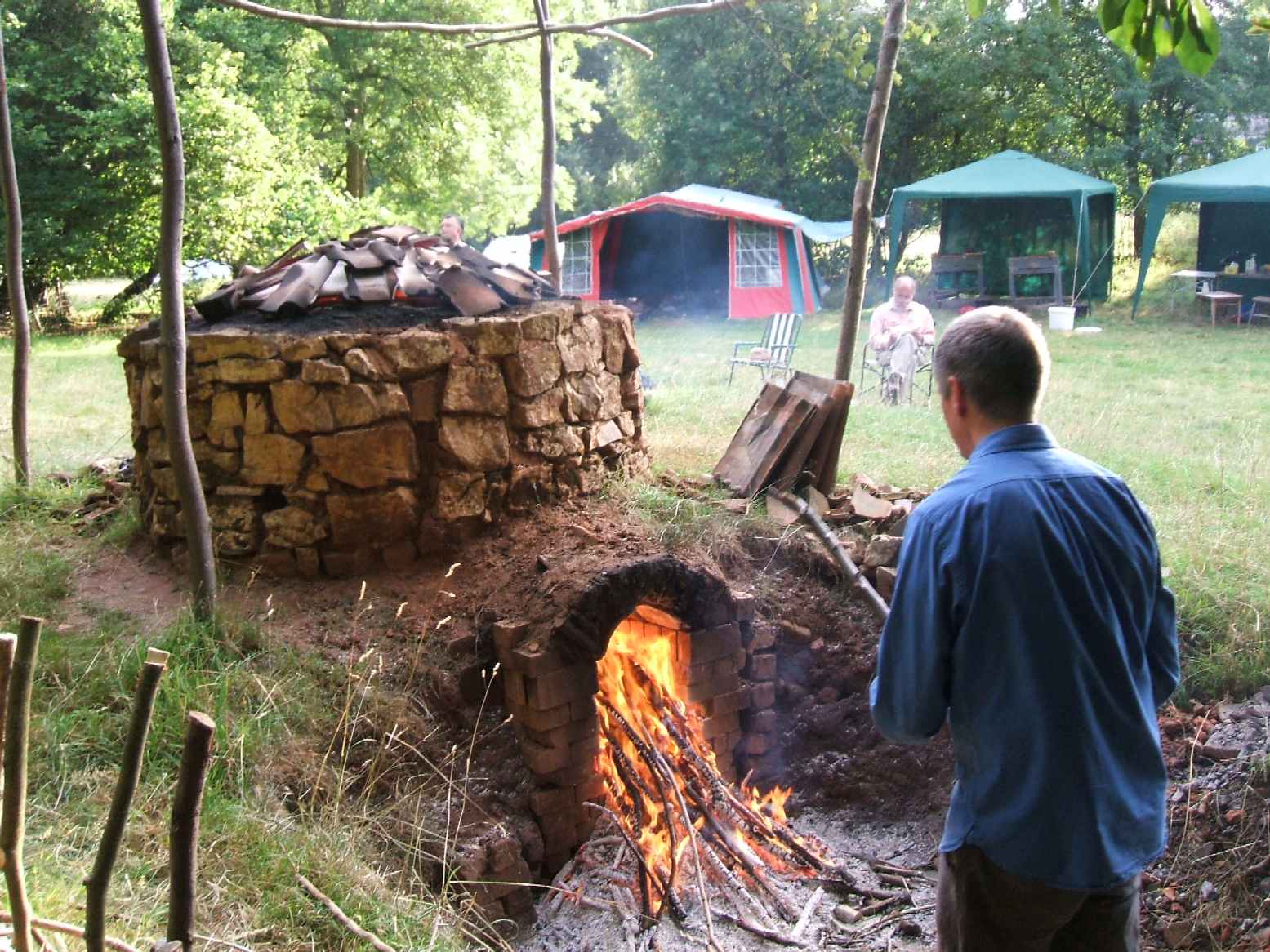 |
||
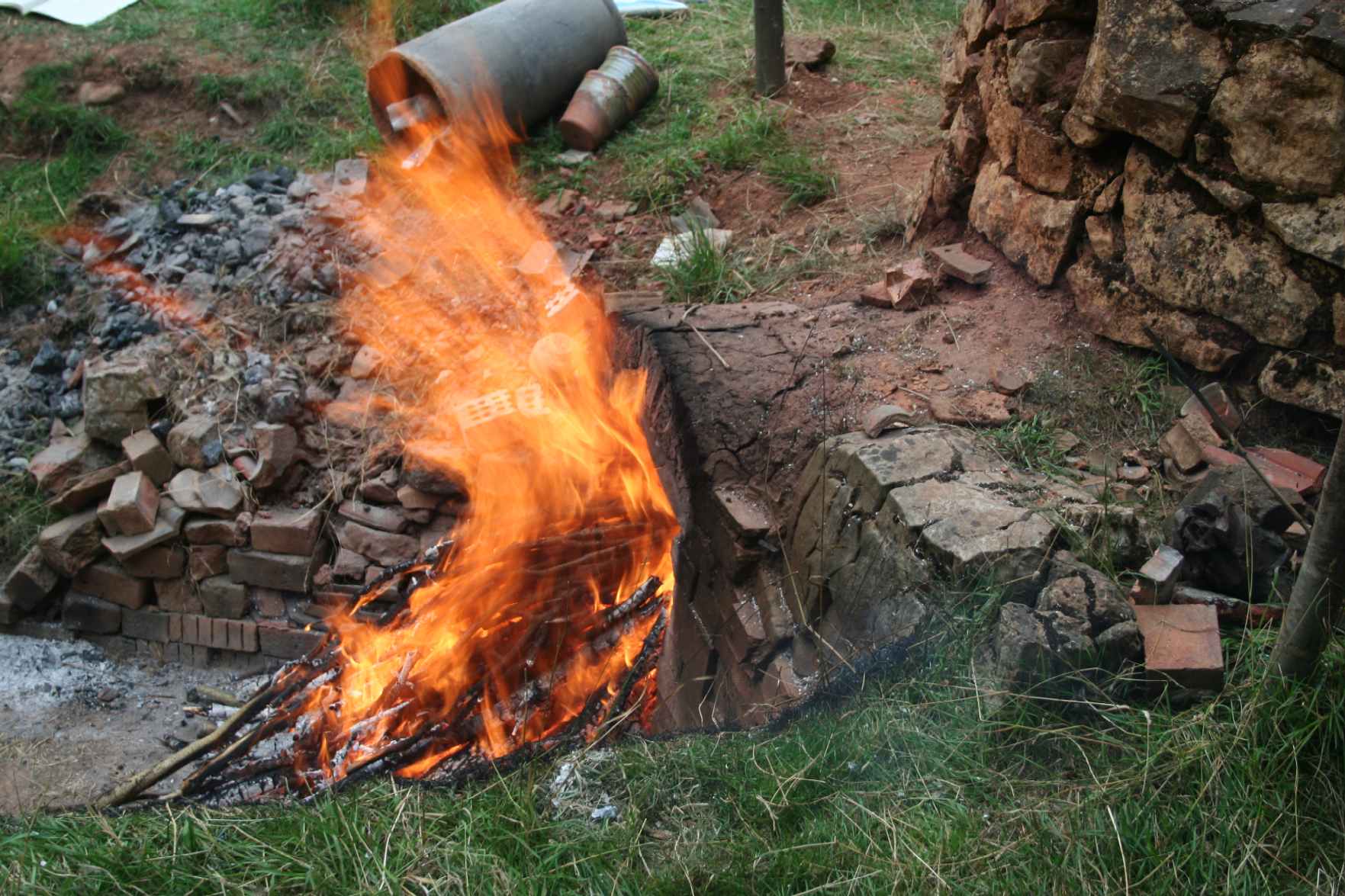 |
| ||
This is
evident from the flames on the top of the kiln as the hot unburnt gases meet the atmosphere
| 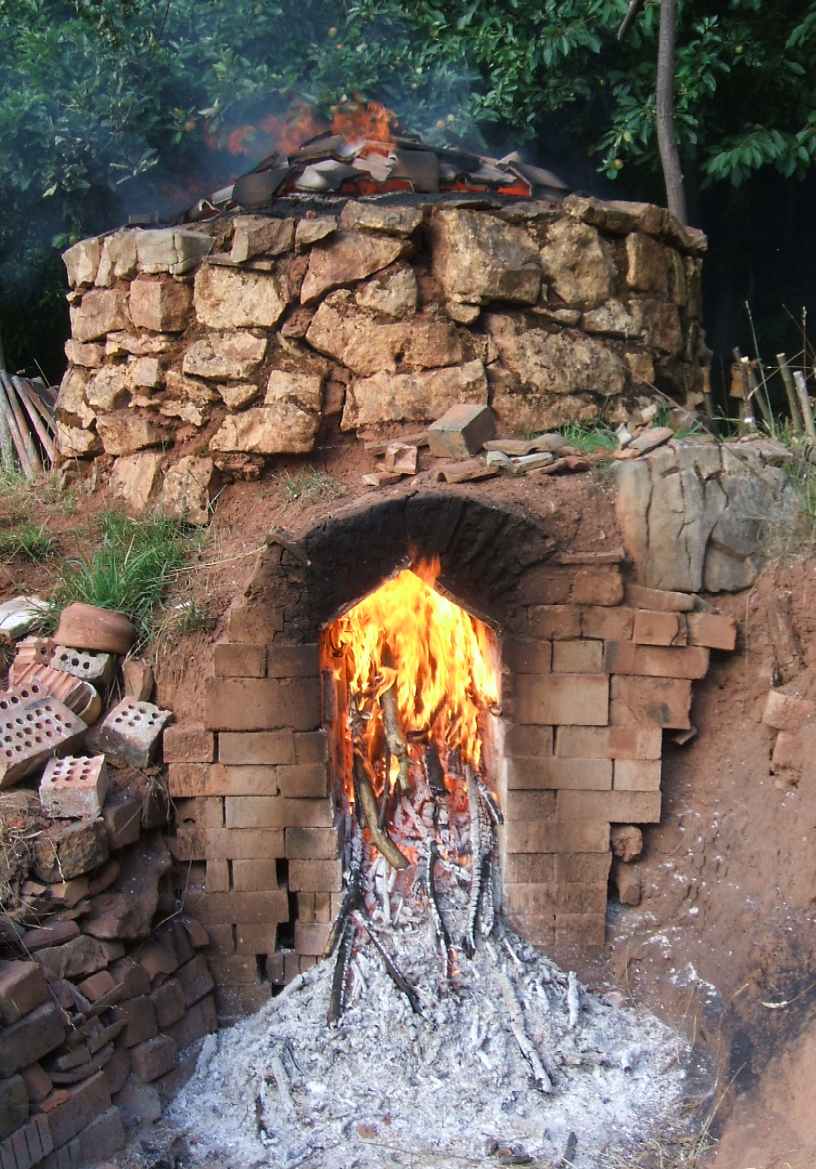 |
||
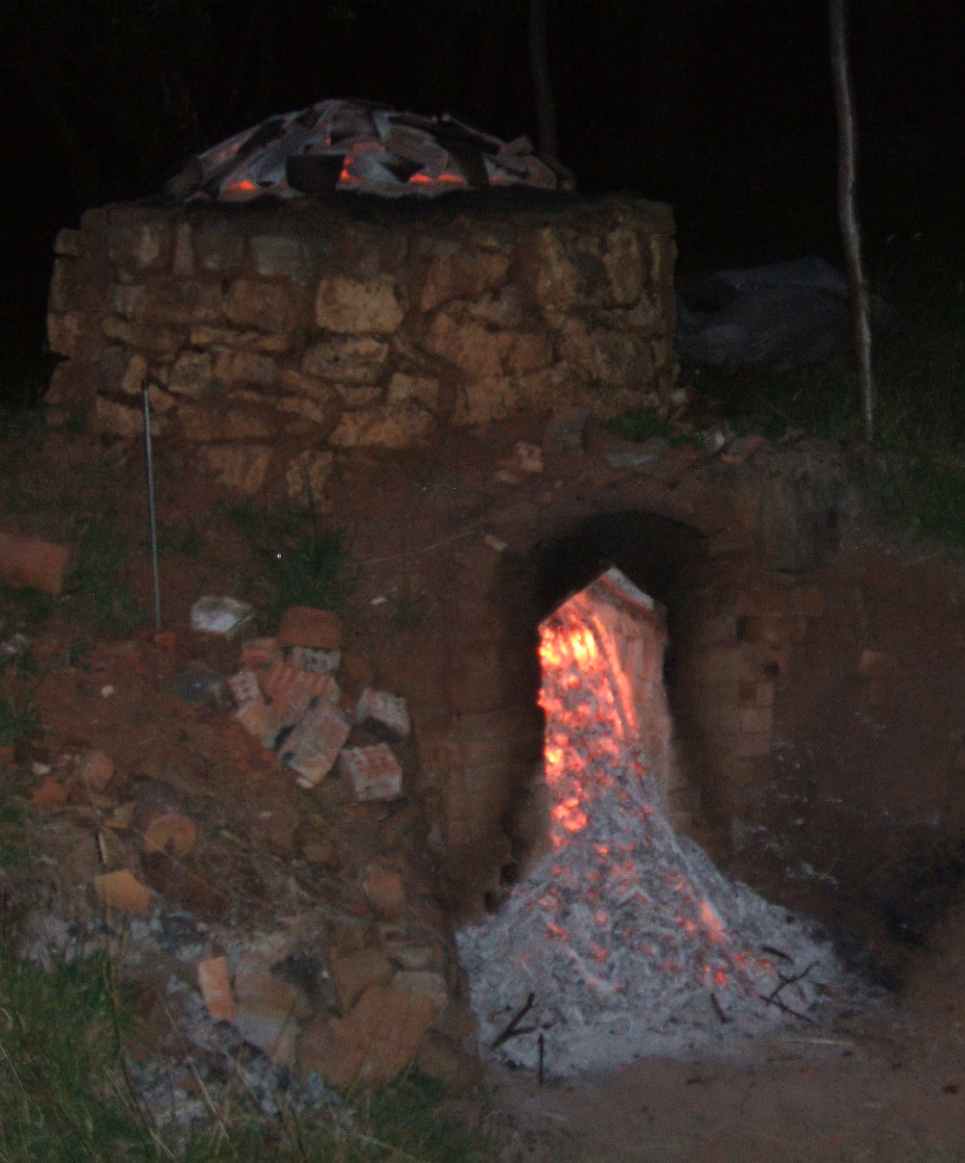 |
Once the temperature is reached (according to the pyrometer) and insertion of a stick into the chamber, on ignition, shows the glazed surfaces to have melted, the stoking ceases and the kiln is left to cool overnight whilst the stokers retire to the pub for some well-deserved rehydration | ||
|
Oliver Kent and David Dawson, the driving forces behind the project since its inception, open the still quite warm kiln. The thickness of the walls can be seen together with the condition of the clay liner which has been subject to repeated firings
| 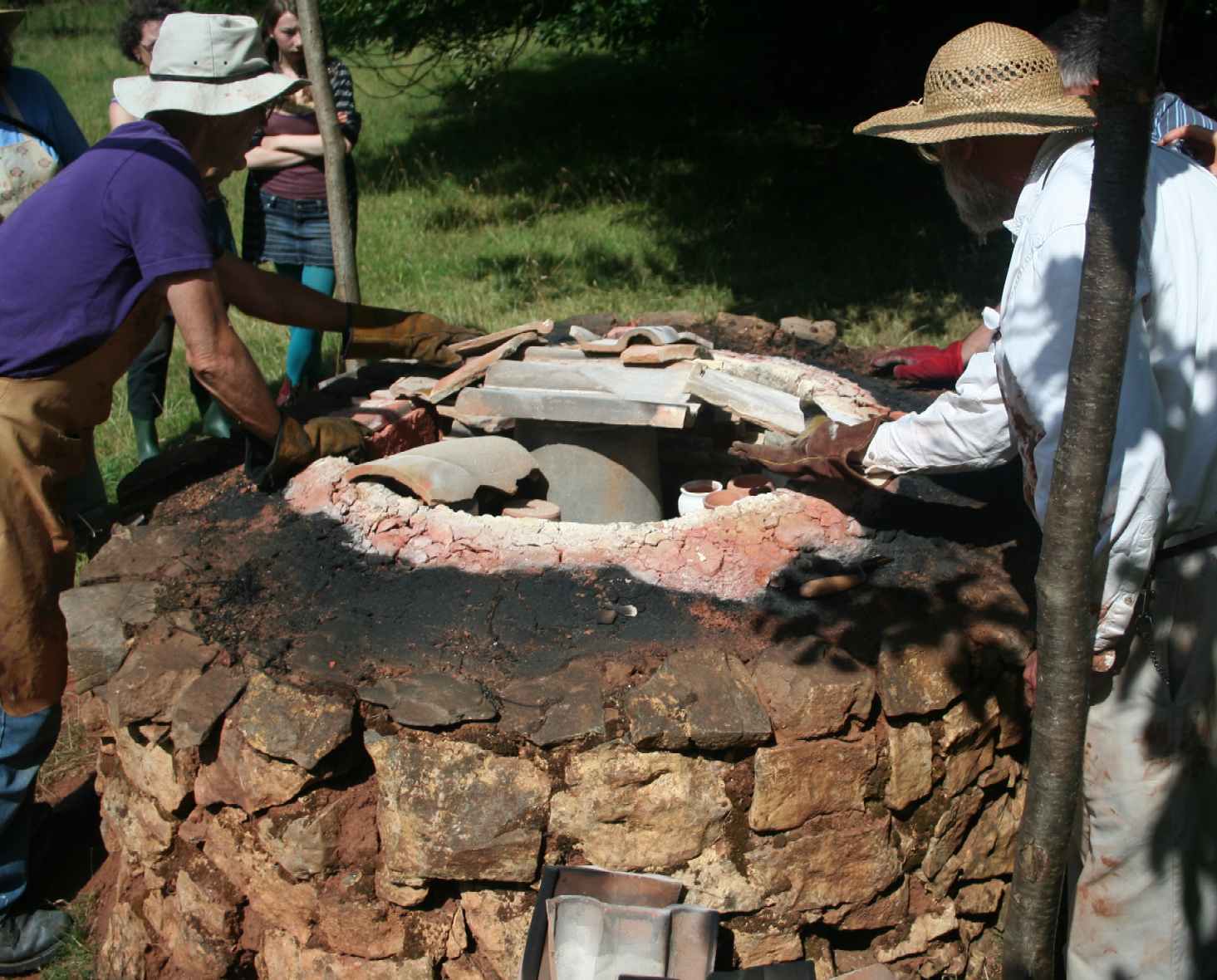 |
||

